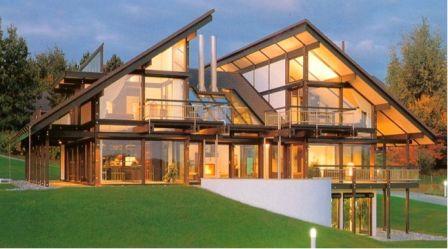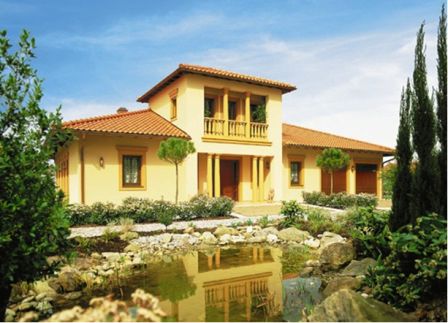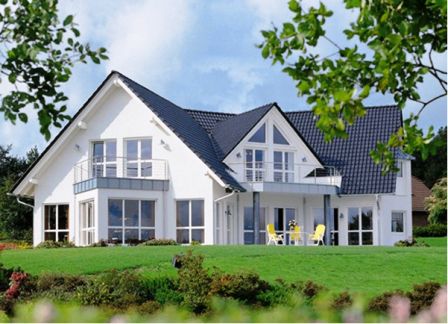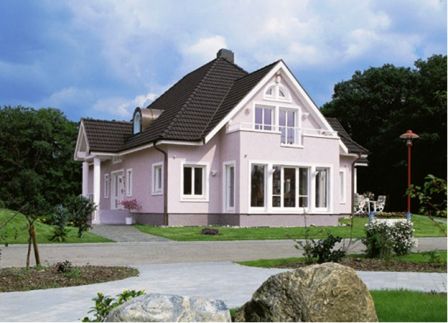|
Executive Summary
 Horizon
Technologies, Inc. has been created to operate and manage
manufacturing facilities utilizing certain technologies relating to
State of the Art production of pre-engineered homes and building
components. There are twenty Manufacturing Facilities planned for
the Southern United States. Three Facilities are designated “Primary
Facilities” with one ea. located in California, Texas and North
Carolina. The seventeen additional Facilities are designated
“Sub-assembly Facilities” are to be located in pre-selected areas
from the Southern West Coast to the Southern East Coast. Each
manufacturing facility is identified by the location in a respective
State where it maybe located. Each facility will be incorporated in
the State in which it operates. Horizon
Technologies, Inc. has been created to operate and manage
manufacturing facilities utilizing certain technologies relating to
State of the Art production of pre-engineered homes and building
components. There are twenty Manufacturing Facilities planned for
the Southern United States. Three Facilities are designated “Primary
Facilities” with one ea. located in California, Texas and North
Carolina. The seventeen additional Facilities are designated
“Sub-assembly Facilities” are to be located in pre-selected areas
from the Southern West Coast to the Southern East Coast. Each
manufacturing facility is identified by the location in a respective
State where it maybe located. Each facility will be incorporated in
the State in which it operates.
 The
foundation upon which Horizon Technologies (HTI) was created is the
company’s expertise in a fully integrated CAD-CAM Manufacturing
System. This State of the Art Manufacturing System, using the latest
in computer technology and control, provides a vehicle to construct
single family and multi family, as well as low-rise commercial
buildings, much faster, with a considerably higher and consistent
quality, and at a lower cost, than conventional construction. The
foundation upon which Horizon Technologies (HTI) was created is the
company’s expertise in a fully integrated CAD-CAM Manufacturing
System. This State of the Art Manufacturing System, using the latest
in computer technology and control, provides a vehicle to construct
single family and multi family, as well as low-rise commercial
buildings, much faster, with a considerably higher and consistent
quality, and at a lower cost, than conventional construction.
As an operational base, HTI performs the following primary
functions;
• Consolidate design and engineering of all structures, and provide
the production drawings for the fabrication process at all operating
facilities.
• Provide oversight on the operation of all facilities.
• Hire and train initial staffing at all facilities.
• Directly manage the site identification, site planning and
permitting, and the construction of all facilities, and the
installation of all equipment at each facility.
• Provide manufactured components from the facilities, identified as
Primary facilities, to the Sub- assembly facilities.
• Monitor related technology trends, develop proprietary technology,
and apply new technologies to provide improvements in components and
processes.
The importance of the latter point cannot be underestimated. HTI’s
advanced proprietary engineering systems and technologies provide
the methodology to build and assemble entire housing communities
that are high-quality, energy-efficient, structurally superior,
cost-effective to produce, and resource-efficient in their
production, while conserving labor and material costs. The
development of specialized manufacturing equipment and techniques,
coupled with highly specialized training, is central to the
economies of scale produced, and provide for controlled, efficient
production. Most significantly, HTI has been successful in
implementing this technology. The company has demonstrable potential
to revolutionize the home building industry in North America.
 The
founders and principals of Horizon, comprising a team of highly
motivated, experienced engineers and senior managers, with many
years of combined experience, are most qualified to perform the
functions enumerated above. They represent decades of manufacturing
experience, and over 30 years of direct experience with the Building
System as it has evolved. Four of the five principals hold
engineering and other advanced degrees from major Western
educational institutions, with the other holding an MBA from one of
the leading International Business Schools. Individual patents
relating to certain aspects of the Building System are held by the
principals, and additional patents are pending, as a result of the
continuing quest for new technology, a quest that will never end,
for HTI is dedicated to the principle of incorporating new
technology wherever possible and practical in the continuing effort
of maintaining the highest possible competitive position. The
founders and principals of Horizon, comprising a team of highly
motivated, experienced engineers and senior managers, with many
years of combined experience, are most qualified to perform the
functions enumerated above. They represent decades of manufacturing
experience, and over 30 years of direct experience with the Building
System as it has evolved. Four of the five principals hold
engineering and other advanced degrees from major Western
educational institutions, with the other holding an MBA from one of
the leading International Business Schools. Individual patents
relating to certain aspects of the Building System are held by the
principals, and additional patents are pending, as a result of the
continuing quest for new technology, a quest that will never end,
for HTI is dedicated to the principle of incorporating new
technology wherever possible and practical in the continuing effort
of maintaining the highest possible competitive position.
During the early days of research, the limitations of the
traditional supply channels for the residential construction
industry became apparent. HTI came to the conclusion that a certain
amount of processing.
 (value-added)
of raw material or semi finished product is necessary to assure the
quality standards of the desired application to the manufacturing
process. As a result, a fundamental goal of the manufacturing effort
has become to vertically integrate wherever possible, and thus to
control the material and the costs of the value added processes at
every step. It is the philosophy of the Company to do as much as
possible in the facility and as “little as possible on site.” The
traditional domestic building industry is subject to material supply
variables. The high degree of vertical integration in the
manufacturing process of the Building System, together with the
controlled environment of the manufacturing facility, minimizes this
issue of instability in the supply of raw materials. The fundamental
benefit is the production of a premium product in a consistent,
timely, efficient and economical manner. Couple this vertical
integration with production volume provides economy of scale and it
is this coupling that is the fundamental basis behind which superior
quality can be achieved at competitive prices. (value-added)
of raw material or semi finished product is necessary to assure the
quality standards of the desired application to the manufacturing
process. As a result, a fundamental goal of the manufacturing effort
has become to vertically integrate wherever possible, and thus to
control the material and the costs of the value added processes at
every step. It is the philosophy of the Company to do as much as
possible in the facility and as “little as possible on site.” The
traditional domestic building industry is subject to material supply
variables. The high degree of vertical integration in the
manufacturing process of the Building System, together with the
controlled environment of the manufacturing facility, minimizes this
issue of instability in the supply of raw materials. The fundamental
benefit is the production of a premium product in a consistent,
timely, efficient and economical manner. Couple this vertical
integration with production volume provides economy of scale and it
is this coupling that is the fundamental basis behind which superior
quality can be achieved at competitive prices.
The vertical integration effort and the technologies involved have
resulted in the discovery of highly beneficial by-products. These
by-products have significantly contributed to cost reductions and
product quality. The creation of these by-products represents a
continuing focus for HTI and all such by-products will be made
available as an adjunct to HTI’s involvement with other operating
entities.
Technology
1. CAD-CAM Manufacturing System:
This system eliminates the traditional “stick-built” wood frame
construction process that is the predominant method of construction
for single family and low-rise multi-family housing in the United
States.
The CAD-CAM process provides inherent accuracy and speed. These are
fundamental benefits, which the application of CAD-CAM has
demonstrated in a wide variety of applications from the manufacture
of automobiles to semiconductors and brings production of quality
homes in line with real Market conditions resulting in efficiency
and economy to scale. With respect to housing, these benefits
translate to:
• quality (low maintenance costs and extended life). Quality comes
from the intrinsic accuracy of the process, which cannot be
duplicated by conventional construction,
• energy efficiency (75% or better energy cost savings also
resulting in an increase of sound insulation)
• greatly reduced construction time, to the extent that spec
building in tract developments is eliminated,
• greatly reduced labor content (total labor content of less than
15% compared to over 50% for conventional construction), and
• significant construction cost savings due to elimination of waste
and the preservation of natural resources.
The above benefits accrue, irrespective of product design. The
Building System is capable of building any product of any size and
any architectural design that can be built conventionally.
The Building System is essentially a high-tech approach to building
and a substitute to conventional construction. The fundamental
difference is that the Building System applies a very high level of
value added to the raw material prior to the manufacturing process,
whereas in conventional construction, with some exceptions (roof
trusses, window/door assemblies), the site material has no value
added. The full benefits of the system are realized, irrespective of
the positioning of the product in the marketplace, if there is
sufficient volume to fully achieve the economies of scale the
CAD-CAM system offers.
As with other CAD-CAM processes, the Building System has, and
continues to, evolve with time and technological change. The
combined experience of HTI’s technology engineers in this
evolutionary process is over 50 years. During this period, a number
of proprietary technological processes and procedures have been
created. These processes add value to the Building System as it
applies to the US and/or the Global market. In addition, the basic
CAD-CAM process has evolved to accommodate the international
building standards and by far exceeds most if not all energy
conservation standards.
2. Building Components
Horizon has developed a number of state of the art building
components. A common basis behind the fabrication of these
components is the preservation of the natural resource comprising
the raw material. The development process is comprehensive and
includes the design and construction of the machinery used to
fabricate the components. Development includes the remanufacture of
the raw materials into components, which are stronger, lighter, more
durable and more cost-effective intermediate products. These
components may generally be categorized as “engineered structural
material” (ESM) and include structural columns, joists and rafters
and a direct replacement for the ubiquitous dimensional lumber. HTI
principals hold several patents relating to this general area. In
addition, several other patents are pending.
The cost advantages of ESM will be compounded when a pending JV with
a large lumber producer is consummated. This JV will provide HTI
with a low cost source of raw material for ESM. The raw material is
a species found near the arctic circle in northern Canada that is
generally considered of little utility because of its extreme
hardness and the practical difficulty this presents in nailing. With
the Building System, and the highly automated production equipment
that is part of the system, this natural hardness represents no
obstacle.
HTI also has access to state of the art technology through third
party relationships. A new window technology utilizing specially
grown straw, recycled household components, wood fiber and other
organic matter are combined into a strong, durable and extremely
energy efficient window profile which can then become the basic
window component for windows used by the Building System.
FERMACELL, a product produced from wood fiber, recycled paper fiber,
nylon fiber reinforcement and small amounts of natural gypsum, the
FERMACELL product represents a direct replacement for conventional
drywall. FERMACELL is a much stronger, structurally superior product
and it is highly fire resistant and withstands water penetration to
make it virtually water proof. In addition, the installed product
does not require tape or texture and, as a result, long smooth flat
walls can be realized without resorting to the expensive procedures
of conventional drywall. While conventional construction can use
FERMACELL, it is heavier and its utility is somewhat limited, since
it is difficult to realize long, straight walls.
Another state of the art process being implemented by HTI concerns
the heat treating of wood resulting in a product identified as “Therm-wood”.
This new technology has managed to negate the operating risks of
applying extreme heat to the drying process. The advantage of heat
treating is that the associated cellular changes within the wood can
literally turn scrap lumber into material with highly desirable
building qualities. The finished product is usable for exterior
application without adversely being affected by moisture, humidity
and other weather conditions. The elimination of pressure treated
wood from the market place, due to the carcinogenic affects to the
environment and people, will tremendously increase the popularity of
this Technology. HTI, has exclusive use of that technology in the
United States and has first right of refusal in other countries.
The third party technologies described above are a sample only.
There are a number of other situations under investigation or
designed into use with the Building System. In sum, these
technologies, when applied to the Building System, will produce a
finished product that continues to further enhance the quality and
price advantages of the finished housing product.
3. Electric Power
Due to the need of using heat to dry lumber and heat-treating of
lumber, a fossil fuel boiler of significant size is needed and will
be employed by HTI in order to absorb waste product created by the
Company, i.e. planer shavings, saw dust, hog-fuel etc. This
technology is centered on the production of electric power using the
Organic Rankin Cycle (ORC). ORC technology employs a bio-mass fired
CHP plant in which the combustion occurs at a high temperature, high
enough to meet all environmental standards as they are known today
and those elevated standards which must reasonably be assumed to be
coming in the near future.
The ORC process can utilize virtually the entire spectrum of solid
organic material including household trash, construction debris,
hospital waste and any other solid matter with a moisture content of
up to 60%. This technology is highly compatible, for example, with
any Building System facility because of the fuel source represented
by scrap from the CAD-CAM process.
As a by-product, the ORC power plant provides thermal heat and
refrigeration with no detrimental effects to the environment. A
significant feature of the ORC process is the absence of the
traditional steam turbine, an absence which substantially increases
operational safety and reduces operating costs.
The ORC process is scalable, with about 2.5 to 3 MW being the
practical lower limit of plant power. Capital costs currently
representative and economies of scale can reduce this for larger
power units. Operating costs depend on many factors, particularly
the fuel source and its cost. Nevertheless, operating costs of 2-5c/kWHr
are representative. Excess power is available from the facility to
provide electricity to the local residential area to power a
substantial number of homes. Additionally, there is a great amount
of thermal power, which is a by-product from the manufacturing
process and can be used to provide hot water for heating and
domestic use to the residential customers in the immediate area.
Horizon Technologies has developed a strategic relationship with the
European company that has developed this technology and the hardware
utilizing the technology. A driving force behind this strategy is
the synergy the technology offers with the Building System.
Strategic Relationships
Tentative Partnerships have been formed with the express purpose of
the to underwrite selected Housing and infrastructure development
projects in the United States, Mexico and on a global basis. A
common element to these programs is a humanitarian component.
Affordable and economic housing projects are one example. Assets are
employed to facilitate the financing of such projects. HTI‘s
responsibility is to implement the various developments in a
partnership with a selected Group of Partners to benefit humanity.
The Building System technology is highly compatible with the goals
of this partnership.
Various strategic relationships with a number of third party
entities that are essentially technology or resource related. All of
these relationships were created and maintained for the express
purpose of building and maintaining a technological base, which HTI
deems essential in order to sustain a competitive position. These
relationships are quite varied in their structure but do include the
potential to enter into exclusive arrangements which will create
additional profit centers.
The primary manufacturer of the highly sophisticated production
equipment needed to effectively produce this product, has agreed to
Joint Venture the partial production of the CAD/CAM machinery in a
separate facility owned by HTI and it will be produced for the North
American Market under a licensing agreement, thus adding control to
HTI’s activities as well as assuring total vertical integration.
Building System Facilities
USA: There is a need for three Primary Facilities in the Continental
United States, one on the West Coast, one on the East Coast and one
in the Central US and most likely in Texas. Additionally, there are
17 Sub-assembly facilities needed throughout the southern United
States. (See plant location map attached). The reason for this is
the need to produce components and sub components for distribution
to the Sub- assembly facilities. The availability of the
raw-material, the need for processing equipment and the location to
the market place, requires the Primary facilities to be located in
those geographical areas as described above.
The Primary Facility is larger, more complex, requires more staffing
and skill as well as much more equipment to facilitate the needs of
the sub-assembly facilities. The three Primary Facilities combined,
will be able to serve up to 17 Sub-assembly facilities efficiently.
Personnel: Even though the manufacturing process employed does not
rely on the skill of personnel, it requires a tremendous amount of
unskilled or low skilled people who affectively use this process to
produce a product for the market place which is unequalled in
quality, energy efficiency and structural superiority. Highly
skilled key personnel and the application of robotics in the
manufacturing process assure the delivery of a high quality product.
The application of low-skilled or un-skilled labor provides an
enormous opportunity to local communities which supply that type of
labor from the labor pool consisting of the “difficult to employ”
personnel which do not possess the skill level needed in today’s
market place. The humanitarian impact to those communities is
therefore immeasurable.
Benefits of the System:
The establishment of these types of manufacturing facilities has
enormous benefits in the communities in which they are located as
well as to the market place at large. Each manufacturing facility
will employ hundreds of low skilled personnel who will be able to
earn competitive wages and learn a new skill with benefits which are
far reaching in to the future of each employee. Locations have been
selected based on the need of the economic level of activity
respective to the location and to the market place. Direct and
indirect benefits to the communities will be very effective and
stimulate increased business activities. HTI has worked with the
Economic Development Agencies around the country to identify and
bring employment to the people who need it the most.
The product delivered to the market place introduces the ability to
afford a quality product by the people who are presently displaced
from the home buying segment of the market. This new, high-tech
approach to home building, using revolutionary robotic applications
to the manufacturing process, makes all this possible.
|
|


 The
foundation upon which Horizon Technologies (HTI) was created is the
company’s expertise in a fully integrated CAD-CAM Manufacturing
System. This State of the Art Manufacturing System, using the latest
in computer technology and control, provides a vehicle to construct
single family and multi family, as well as low-rise commercial
buildings, much faster, with a considerably higher and consistent
quality, and at a lower cost, than conventional construction.
The
foundation upon which Horizon Technologies (HTI) was created is the
company’s expertise in a fully integrated CAD-CAM Manufacturing
System. This State of the Art Manufacturing System, using the latest
in computer technology and control, provides a vehicle to construct
single family and multi family, as well as low-rise commercial
buildings, much faster, with a considerably higher and consistent
quality, and at a lower cost, than conventional construction. 
 (value-added)
of raw material or semi finished product is necessary to assure the
quality standards of the desired application to the manufacturing
process. As a result, a fundamental goal of the manufacturing effort
has become to vertically integrate wherever possible, and thus to
control the material and the costs of the value added processes at
every step. It is the philosophy of the Company to do as much as
possible in the facility and as “little as possible on site.” The
traditional domestic building industry is subject to material supply
variables. The high degree of vertical integration in the
manufacturing process of the Building System, together with the
controlled environment of the manufacturing facility, minimizes this
issue of instability in the supply of raw materials. The fundamental
benefit is the production of a premium product in a consistent,
timely, efficient and economical manner. Couple this vertical
integration with production volume provides economy of scale and it
is this coupling that is the fundamental basis behind which superior
quality can be achieved at competitive prices.
(value-added)
of raw material or semi finished product is necessary to assure the
quality standards of the desired application to the manufacturing
process. As a result, a fundamental goal of the manufacturing effort
has become to vertically integrate wherever possible, and thus to
control the material and the costs of the value added processes at
every step. It is the philosophy of the Company to do as much as
possible in the facility and as “little as possible on site.” The
traditional domestic building industry is subject to material supply
variables. The high degree of vertical integration in the
manufacturing process of the Building System, together with the
controlled environment of the manufacturing facility, minimizes this
issue of instability in the supply of raw materials. The fundamental
benefit is the production of a premium product in a consistent,
timely, efficient and economical manner. Couple this vertical
integration with production volume provides economy of scale and it
is this coupling that is the fundamental basis behind which superior
quality can be achieved at competitive prices.